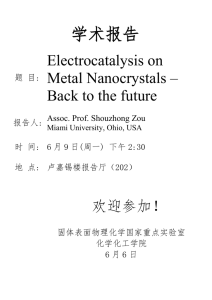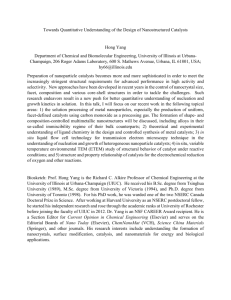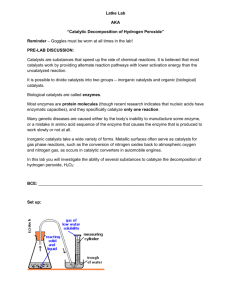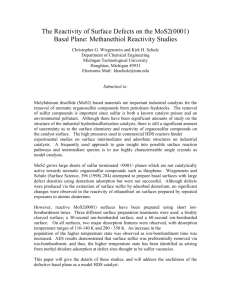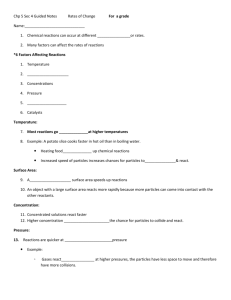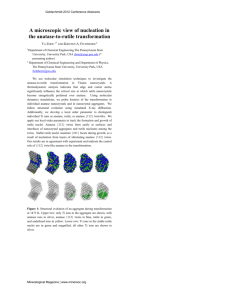Abstract - Catalysis Club of Philadelphia
advertisement
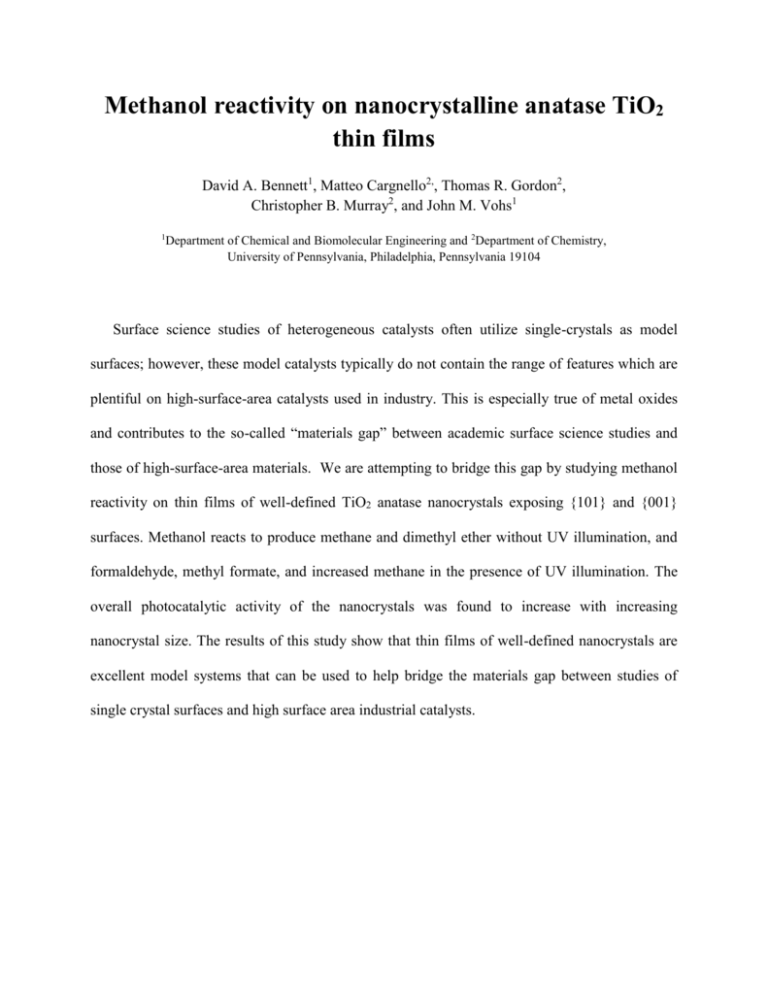
Methanol reactivity on nanocrystalline anatase TiO2
thin films
David A. Bennett1, Matteo Cargnello2,, Thomas R. Gordon2,
Christopher B. Murray2, and John M. Vohs1
1
Department of Chemical and Biomolecular Engineering and 2Department of Chemistry,
University of Pennsylvania, Philadelphia, Pennsylvania 19104
Surface science studies of heterogeneous catalysts often utilize single-crystals as model
surfaces; however, these model catalysts typically do not contain the range of features which are
plentiful on high-surface-area catalysts used in industry. This is especially true of metal oxides
and contributes to the so-called “materials gap” between academic surface science studies and
those of high-surface-area materials. We are attempting to bridge this gap by studying methanol
reactivity on thin films of well-defined TiO2 anatase nanocrystals exposing {101} and {001}
surfaces. Methanol reacts to produce methane and dimethyl ether without UV illumination, and
formaldehyde, methyl formate, and increased methane in the presence of UV illumination. The
overall photocatalytic activity of the nanocrystals was found to increase with increasing
nanocrystal size. The results of this study show that thin films of well-defined nanocrystals are
excellent model systems that can be used to help bridge the materials gap between studies of
single crystal surfaces and high surface area industrial catalysts.

